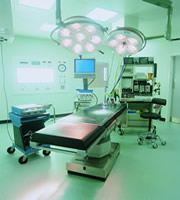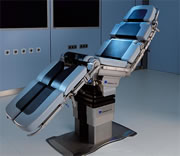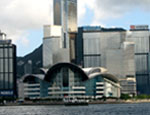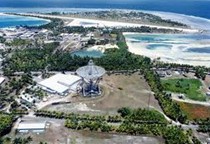 联系我们
联系我们
- 电话:020-85593870
- 电话:020-85593869
- Email:fy991@126.com
- 地址:广州市天河区天河路371-377号隆德大厦6楼西A15室(地铁石牌桥站D出口)
 多语种翻译
多语种翻译
 成功案例
成功案例
 首页>>翻译案例>> 国家标准/食品安全国家标准翻译/国家食品安全标准翻译
首页>>翻译案例>> 国家标准/食品安全国家标准翻译/国家食品安全标准翻译
国家标准翻译/食品安全国家标准翻译/国家食品安全标准翻译
为了保护客户资料,以下仅为摘录:
National Standards of the People's Republic of China
GB4789.15—2010
食品安全国家标准
食品微生物学检验 霉菌和酵母计数
National food safety standard
Food microbiological examination: Enumeration of moulds and yeasts
PREAMBLE
前 言
This standard shall take replace of GB/T 4 7 89 . 15- 2 0 0 3 Food Hygiene Microbiological Examination: Enumeration of Moulds and Yeasts since the effective date.
Main revised contents of this standard compared to GB/T 4789.15-2003 are:
本标准自实施之日起代替 GB/T 4789.15-2003 《食品卫生微生物学检验 霉菌和酵母计数》。
本标准与 GB/T 4789.15-2003 相比,主要修改如下:
-- Revise the scope;
—— 修改了范围;
-- Revise the examination procedures and operation steps;
—— 修改了检验程序和操作步骤;
-- Revise the culture medium and reagents;
—— 修改了培养基和试剂;
-- Revise the equipments and materials;
—— 修改了设备和材料;
-- Revise the annexes.
—— 修改了附录。
Annex A of this standard is standardized annex, and Annex B is informative annex.
Publishing situations of historical versions replaced by this standard is:
本标准的附录 A 为规范性附录,附录 B 为资料性附录。
本标准所代替标准的历次版本发布情况为:
-- GB 4789.15-1984, GB 4789.15-1994 and GB/T 4789.15-2003 。
1. Scope
This standard stipulates method for enumeration of moulds and yeasts in food.
This standard is applicable for enumeration of moulds and yeasts in various foods.
1 范围
本标准规定了食品中霉菌和酵母菌( moulds and yeasts )的计数方法。
本标准适用于各类食品中霉菌和酵母菌的计数。
2. Equipments and Materials
Other equipments and materials are as follows except normal sterilizing and culturing equipments in microbiological laboratory:
2 设备和材料
除微生物实验室常规灭菌及培养设备外,其他设备和材料如下:
2.1 Refrigerator: 2 ℃ ~ 5 ℃ .
2.2 Constant temperature incubator: 2 8 ℃ ± 1 ℃ .
2.3 Homogenizer.
2.4 Constant temperature oscillator.
2.5 Microscope: 10 × ~ 1 0 0 ×.
2.6 Electronic balance: definition is 0 . 1 g .
2.7 Sterilized conical flask: volume is 5 0 0 ml, 250 ml.
2.8 Sterilized wild-mouth bottle: 5 0 0 m l.
2.9 Sterilized suction tubes: 1 ml (with scale of 0.0 1 ml), 1 0 m l (with scale of 0. 1 ml).
2.10 Sterilized plate dish: diameter is 90 m m .
2.11 Sterilized test tube: 1 0 mm × 7 5 m m .
2.12 Sterilized kraft bag, plastic bag.
2.1 冰箱: 2 ℃ ~ 5 ℃ 。
2.2 恒温培养箱: 28 ℃ ± 1 ℃ 。
2.3 均质器。
2.4 恒温振荡器。
2.5 显微镜: 10× ~ 100× 。
2.6 电子天平:感量 0.1 g 。
2.7 无菌锥形瓶 : 容量 500 mL 、 250 mL 。
2.8 无菌广口瓶: 500 mL 。
2.9 无菌吸管: 1 mL( 具 0.01 mL 刻度 ) 、 10 mL( 具 0.1 mL 刻度 ) 。
2.10 无菌平皿:直径 90 mm 。
2.11 无菌试管 : 10 mm × 75 mm 。
2.12 无菌牛皮纸袋、塑料袋。
3. Culture Mediums and Reagents
3.1 Potato - dextrose – agar culture medium: see A .1 in annex A .
3.2 Rose bengal medium: A .2 in annex A.
3 培养基和试剂
3.1 马铃薯 - 葡萄糖 - 琼脂培养基:见附录 A 中 A.1 。
3.2 孟加拉红培养基:见附录 A 中 A.2 。
4.Examination Procedures
Examination procedures of enumeration of moulds and yeasts can be seen in diagram 1.
4 检验程序
霉菌和酵母计数的检验程序见图 1 。
5.Operating Steps
5 操作步骤
5.1 Dilution of Sample
5.1 样品的稀释
5.1.1 Solid and semi-solid sample: take 25g sample and put it into conical flask containing 225 ml sterilized distilled water, shack it to make 1:10 dilution. Or put into sterilized homogeneous bag containing 225 ml sterilized distilled water, and slap with slapping homogenizer for 2 min to make it into 1:10 sample homogeneous fluid.
5.1.1 固体和半固体样品:称取 25 g 样品至盛有 225 mL 灭菌蒸馏水的锥形瓶中,充分振摇,即为 1:10 稀释液。或放入盛有 225 mL 无菌蒸馏水的均质袋中,用拍击式均质器拍打 2min ,制成 1:10 的样品匀液。
5.1.2 Fluid sample: take 25 ml sample with sterilized suction tube and put it into sterilized conical flask containing 225 ml distilled water (put some sterilized glass beads with proper quantity into the flask in advance), mix them together fully to make it into 1:10 sample homogeneous fluid
5.1.2 液体样品:以无菌吸管吸取 25 mL 样品至盛有 225 mL 无菌蒸馏水的锥形瓶(可在瓶内预置适当数量的无菌玻璃珠)中,充分混匀,制成 1:10 的样品匀液。
5.1.3 Take 1 ml 1:10 dilution and add it into test tube containing 9 ml sterilized water, change the other 1 ml sterilized suction tube to blow it repeatedly, and this fluid will be 1:100 dilution.
5.1.3 取 1 mL 1:10 稀释液注入含有 9 mL 无菌水的试管中 , 另换一支 1 mL 无菌吸管反复吹吸 , 此液为 1:100 稀释液。
5.1.4 P repare 10 times serial dilution sample homogeneous fluid according to operations in 5.1.3. Change another 1 ml sterilized suction tube for each increasing dilution.
5.1.4 按 5.1.3 操作程序,制备 10 倍系列稀释样品匀液。每递增稀释一次,换用 1 次 1 mL 无菌吸管。
5.1.5 Select 2 ~ 3 sample homogeneous fluids with applicable dilutions (fluid sample can include original fluid) according to pollution degree of samples, take 1 ml s ample homogeneous fluid to add into 2 sterilized plate dishes separately when doing 10 times increasing dilution. At the same time, take 1 ml sample diluent and add it into two sterilized plate dishes separately for blank control.
5.1.5 根据对样品污染状况的估计,选择 2 个~ 3 个适宜稀释度的样品匀液(液体样品可包括原液),在进行 10 倍递增稀释的同时,每个稀释度分别吸取 1 mL 样品匀液于 2 个无菌平皿内。同时分别取 1 mL 样品稀释液加入 2 个无菌平皿作空白对照。
5.1.6 P our 15 ml ~ 20 ml potato - dextrose – agar or rose bengal medium cooled to 4 6 ℃ (can put it in constant temperature water bath with temperature of 46 ℃ ± 1 ℃ for temperature protection) into the plate dish timely, and rotate the plate dish so that they can mix together with each other.
5.1.6 及时将 15 mL ~ 20 mL 冷却至 46 ℃ 的马铃薯 - 葡萄糖 - 琼脂或孟加拉红培养基 ( 可放置于 46 ℃ ± 1 ℃ 恒温水浴箱中保温 ) 倾注平皿,并转动平皿使其混合均匀。
5.2 Culture
5.2 培养
Turn over the plate dish after the agar is solidified, and culture it for 5d under temperature of 28 ℃ ± 1 ℃ , observe it and record.
待琼脂凝固后,将平板倒置, 28 ℃ ± 1 ℃ 培养 5d ,观察并记录。
5.3 Bacterial Colony Count
5.3 菌落计数
It can observe by eye, can use magnifier if necessary, and record dilution times and quantity of moulds and yeasts. It shall be expressed colony-forming units (CFU) to express.
肉眼观察,必要时可用放大镜,记录各稀释倍数和相应的霉菌和酵母数。以菌落形成单位( colony forming units , CFU )表示。
Select plates whose colony quantity is between 10 CF U ~ 1 5 0 CFU , and then count the moulds and yeasts separately. It can be recorded as too much if the colony grows on the whole plate. The colony quantity shall be the average of two plates.
选取菌落数在 10 CFU ~ 150 CFU 的平板,根据菌落形态分别计数霉菌和酵母数。霉菌蔓延生长覆盖整个平板的可记录为多不可计。菌落数应采用两个平板的平均数。
6.Results and Report
6 结果与报告
6.1 Compute the average value of colonies in two plates, and then multiplies by corresponding dilution times.
6.1 计算两个平板菌落数的平均值,再将平均值乘以相应稀释倍数计算。
6.1.2 If colony counts in all plates are more than 150 CFU, it shall count the colony quantity in plate dish with highest dilution, others can be recorded as too much, and the result shall be computed by average value of colony quantity multiplies by highest dilution times.
6.1.2 若所有平板上菌落数均大于 150 CFU ,则对稀释度最高的平板进行计数,其他平板可记录为多不可计,结果按平均菌落数乘以最高稀释倍数计算。
6.1.3 If colony quantities in all plates are less than 10 CFU, it shall be computed as the lowest average value of colony quantity multiplies by its dilution times.
6.1.3 若所有平板上菌落数均小于 10 CFU ,则应按稀释度最低的平均菌落数乘以稀释倍数计算。
6.1.4 If there is no colony in all plates with various dilutions, it shall be computed as less than 1 multiplies by the lowest dilution times; it shall be counted as no more than 1 if it is original fluid.
6.1.4 若所有稀释度平板均无菌落生长,则以小于 1 乘以最低稀释倍数计算;如为原液,则以小于 1 计数。
......
 翻译项目
翻译项目
 翻译行业
翻译行业
- 电子设备
- 机械制造/设备
- 电子通信工程
- 医疗设备
- 化妆品
- IT/计算机
- 建筑/公路/桥梁工程
- 法律法规















